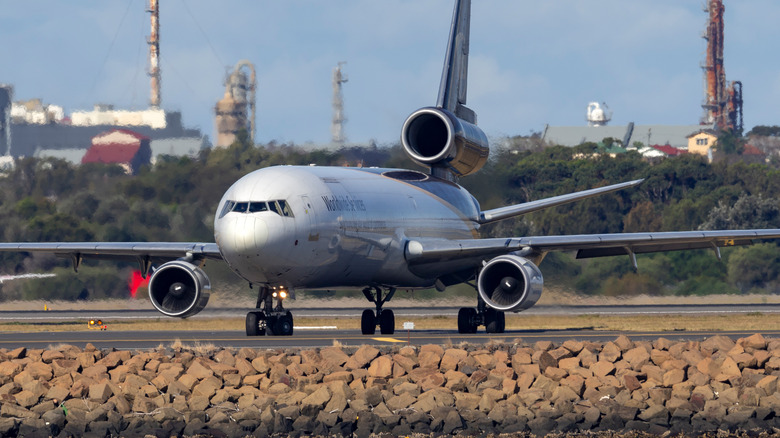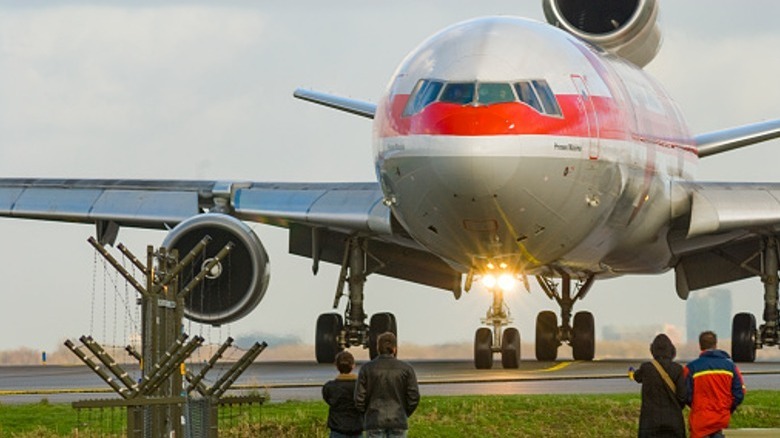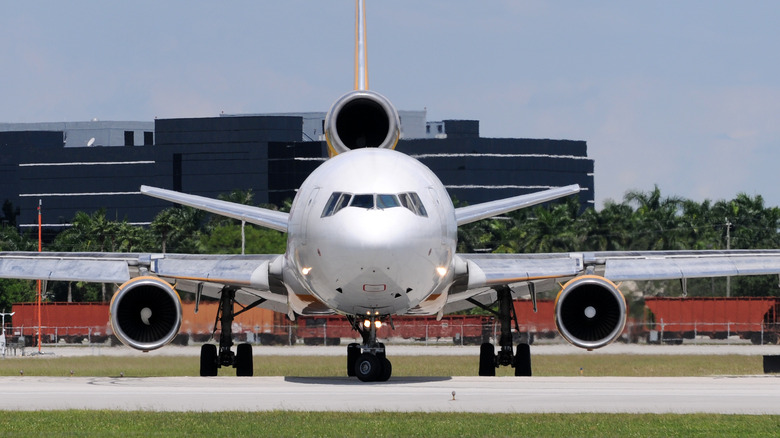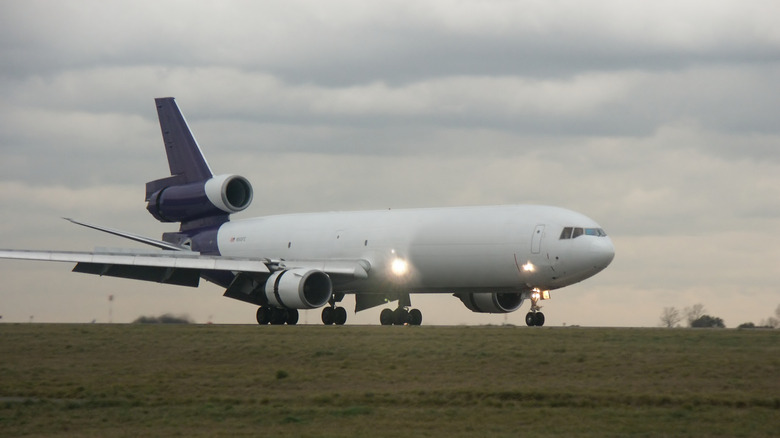Everything To Know About The McDonnell Douglas MD-11 Jet
The MD-11, successor to the popular McDonnell Douglas DC-10 jet, had its first flight in January 1990, and this tri-jet promised a better future for the company, with the goal of leaving the DC-10's difficult past behind. The company's aim with the MD-11 was an attempt to revitalize its commercial aircraft fleet.
But, of course, actually designing and building the MD-11s was not an easy task. McDonnell Douglas was facing a tough time in the mid-1970s, considering the growth of the DC-10, increased competition, and technical advancements at the time that the company felt it needed to incorporate into the MD-11. By the time the MD-11 program formally began in December 1986, the aviation scene had changed dramatically. Early purchases boosted the company's expectations, but despite a promising start, the MD-11 struggled to reach its ambitious performance goals, notably in terms of range and fuel economy.
The combination of McDonnell Douglas and Boeing in 1997 was another pivotal moment for the MD-11. This merger resulted in changes to manufacturing tactics and goals, which influenced the MD-11 production trajectory. By the time manufacturing ended in 2000, just 200 units had been produced. Regardless of this rise and fall, the MD-11 remains an interesting aircraft, and here's everything you need to know about it.
Specs and innovations
The McDonnell Douglas MD-11 is a tri-engine, long-range airliner with a maximum takeoff weight (MTOW) of 610,000 lbs and a range of 8,460 miles designed to connect distant points across the globe. Its seating for 248 passengers made it a significant player in the international travel market at the time. The aircraft's dimensions were notable, too, with a length of 200 feet, a wingspan of 169 feet, and a height of nearly 58 feet.
Powered by three advanced turbofan engines, it even came with General Electric's CF6 models which is considered a revolutionary engine that changed aviation forever. Its advanced technology, including aerodynamic enhancements like winglets designed by NASA and a streamlined tail cone, aimed to improve fuel efficiency. The smaller horizontal stabilizer with integral fuel tanks was also designed for better aircraft balance and fuel efficiency.
Another innovative feature of the MD-11 was its advanced flight deck that enabled operations with just two pilots, a significant reduction from the three people required, which included a flight engineer, for its predecessors and other tri-jets. Coupled with increased cargo capability and more passenger space, the MD-11 was ready to set new standards in aviation — but things didn't exactly go as planned.
Operations and performance
The aircraft came in different variants — the regular MD-11 was the passenger variant, but there's also the MD-11ER for extended range and the MD-11F for freight transport. This jet was also becoming pretty well-known for its performance, too. This included the 500-knot cruising speed and 41,000-foot ceiling, but it had some challenges. When it came to flying long distances, the MD-11 promised a lot, like being able to fly over 12,000 kilometers without stopping, but in real life, if the plane was fully loaded, it couldn't go as far as expected.
Fuel was a big deal for the MD-11, as well. It was designed to be better on fuel than the old DC-10, especially with the special wing designs to help it save fuel. But still, it didn't always hit the mark here either since the three engines were more energy-intensive compared to competitors like the Boeing 777s. The issues with fuel efficiency were even more pronounced on those longer trips. This led to some major carriers like American Airlines becoming dissatisfied and others, such as Singapore Airlines, deciding to go with Airbus instead.
Legacy and retirement of the MD-11
Overpromises aside, when it came to hauling goods around the world, the aircraft stood out — so the MD-11 found its true calling in the cargo industry. McDonnell Douglas made 53 of these planes for the sole purpose of carrying cargo in the form of the MD-11F, and companies like FedEx and UPS loved them because they could load and unload big items easily, thanks to a big door on the side. The aircraft's commercial story turned a new page when Boeing took over McDonnell Douglas in the mid-1990s, leading to the end of MD-11 production by 2000, after a relatively short production run of just over a decade.
Putting the bigger question, "Are airplanes really the safest way to travel?" aside, the jury is still out on whether the MD-11 is a genuinely reliable aircraft. According to the Aviation Safety Network's database, the MD-11 was involved in over 30 accidents. These were mostly without any casualties, except for some incidents like the Swissair accident in 1998, which has to be the worst for the MD-11 due to an inflight fire and subsequent loss of control that led to a crash and 229 fatalities.
The MD-11's retirement from passenger service, marked by KLM's phasing out of the jet in 2014, did not signify the end of its story. Instead, it transitioned fully into cargo, where its design and capabilities continued to be valued by FedEx, Lufthansa Cargo, and the United Parcel Service even today.



